Although PLA is the most popular plastic in 3D printing overall, it pales in comparison to high-performance 3D printing polymers. There are dozens of 3D printing plastics with extraordinarily high levels of strength, durability, wear resistance, heat tolerance, biocompatibility, and other attributes you may need in your final part or functional prototype.
Dozens of metals are 3D printable, but here, we focus on the unique attributes you get by combining 3D printing technology with high-performance polymers.
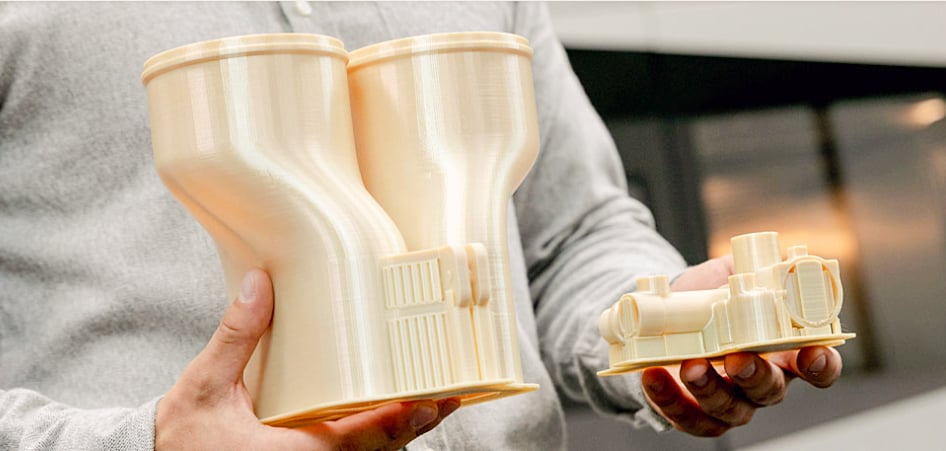
From aerospace to automotive to healthcare, more industries are 3D printing end-use parts that require specific properties. For structural components, equipment spare parts, medical implants, and factory tooling, 3D printing is spurring a move away from metals to non-metals. In fact, high-performance polymers are proving to outperform their metal counterparts in a growing number of applications because they’re lighter, and cheaper and faster to produce in smaller quantities than metal parts.
3D printed polymer parts are often more durable; more corrosion-, chemical-, and heat-resistant; have more impact strength at high or subzero temperatures; and exhibit high electrical insulation and noise-dampening qualities than metals. Polymers also can be customized and manufactured in shapes often not possible with metal and 3D printed to consolidate parts, so there’s no need for assembly or welding.
But how do you pick the right one?
In this overview of high-performance materials, we’ll present the features of the top polymers used in additive manufacturing today to help you make the best selection.
What Are High-Performance Materials?
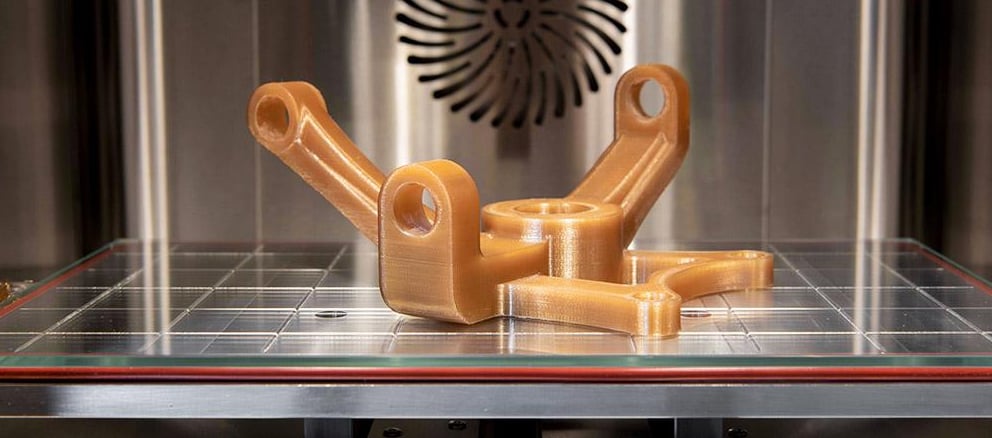
When it comes to plastics, the term “high-performance” is not a scientific classification and sources disagree on which polymers to include. You may hear terms, such as engineering grade, technical polymers, or performance plastics to refer to materials with a higher strength, purity, stiffness, and resistance to wear and chemicals than the most common 3D printing materials, such as PLA and ABS.
On top of the wide variety of polymer types available is the sea of polymer blends, polymers reinforced with glass or carbon fiber, and branded composite materials.
Generally though, you’ll find high-performance plastics are those that retain their desirable mechanical, thermal, and chemical properties when subjected to harsh environments, such as high temperature, high pressure, and corrosive chemicals. In other words, they don’t bend, warp, crack, or splinter.
What are High-Performance Plastics Used For?
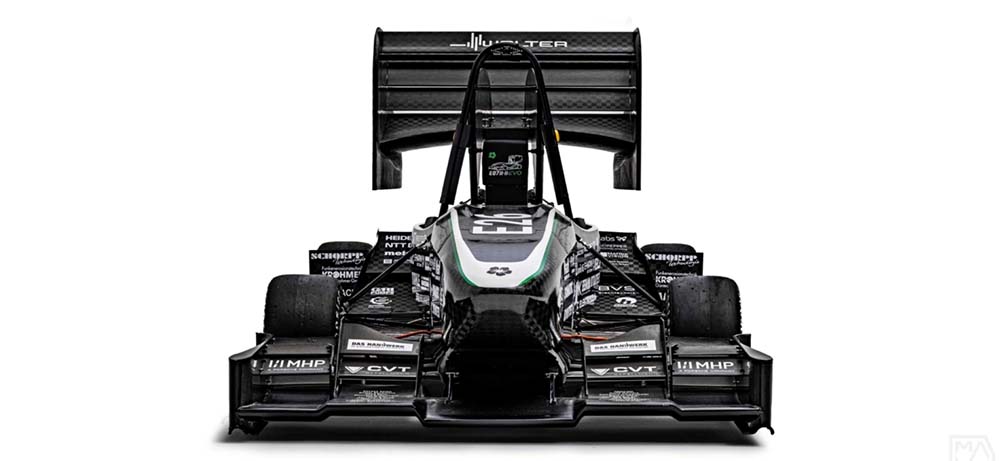
High-performance plastics are most commonly used for end-use, functional parts due to their high cost. They are also used as functional prototypes for parts that will eventually be made of metal, glass, or parts that will be mass-produced, for example, automobile part prototypes. Prized today as a replacement for high-cost and environmentally unsustainable metals, such as copper, brass, titanium, and aluminum, high-performance polymers resist oxidation, corrosion, and chemical contamination. They also react differently to heat than metals, which is an advantage in various applications from medical implants to motors.
Let’s take a look at some specific examples.
Rapid Prototyping in Motor Sports
In an industry that relies on multiple experimental design iterations, the ability to quickly print a prototype part that can actually withstand the riggers of functional testing enables race teams to innovate faster. In addition, more end-use, high-performance 3D printed parts are finding their way onto the track and into electric race cars because of the material’s non-conductivity.
One recent example is the motorcycle racing team Ducati Corse and its use of 3D printing high-performance materials for a tank heat shield for the Ducati Panigale V4 R Superbike. The functional prototype part, which required heat resistance up to 700º C, would have typically been made via manual lamination of carbon fiber prepregs from molds. By partnering with 3D printer maker Roboze, the team 3D printed the part faster in carbon-PEEK and eliminated the tooling phase entirely.
“Thanks to Roboze’s 3D printing technology for super polymers and composites, we have been able to significantly speed up the production of aerodynamic components with incredible mechanical properties,” said Riccardo Savin, Ducati Corse vehicle dynamics and design manager.
McLaren Racing, which makes Formula 1 cars, partnered with 3D printer maker Stratasys to produce an aerodynamic scoop and vanes from carbon fiber-reinforced nylon 12 material. The additive manufacturing process reduced the parts’ lead time from 29 days to five, while also cutting associated costs by roughly 25%, the company says. In another case, 3D printing front brake ducts reduced lead times by 60% and cost by 85% when compared to traditional manufacturing.
“Using additive manufacturing, rather than machining metal or polymer, allows us to achieve a component quickly with less personnel involved. Less time, fewer people, less material, less wastage,” summarized McLaren design & development director Neil Oatley.

Lightweighting in Aerospace
Replacing metal parts with strong high-performance plastic parts has shown to dramatically lower the weight of aircraft, spacecraft, and satellites, which leads to fuel and size efficiency. High-performance plastics coupled with generative design has resulted in parts, such as brackets and walls, that use less material but are stronger than aluminum. High-performance plastics, such as PEEK which has a usable temperature range of -184 ºC to 149 ºC, are ideal for harsh conditions of outer space.
In fact, 3D printed PEEK parts (printed by Orion AM) will touch down on the moon in April 2023 as part of research into how various materials function in the harsh lunar environment. PEEK was selected since it is robust enough to substitute for metal parts in some circumstances and is known to resist the space environment.
Fast Production Molds & Tooling
3D printing complex injection molds and tooling, especially for unique or short-run production, is dramatically less expensive and faster than CNC milling. There’s also no material waste and rapid 3D printing enables manufacturers to offer more custom options to their clients.
Manufacturers are finding out that high-performance plastics are more than a match for metals in machine-tool assembly processes, plus they can be printed in-house or at a 3D printing service bureau faster and at a fraction of the price.

Patient-Specific Implants
Biocompatable high-performance polymers are used in myriad custom-designed implants to address a patient’s specific needs. Additive manufacturing produces these parts faster and with less material waste than milling. 3D printed PEEK has been used in patients for bone replacements due to its osseo-integration.

Plumbing and Water-Handling Systems
Strong, high-performance polymers can replace brass in pressurized hot water applications and offer distinct advantages over metal by eliminating corrosion and contamination by heavy metals and providing more sustainable material solutions. Their excellent oxidation resistance delivers durable, long-lasting performance for applications that require continuous exposure to hot chlorinated water or seawater.

How to Print With High-Performance Materials

Getting the characteristics you need in your final parts requires, of course, that you print them correctly. For high-performance materials, you’ll need to pay special attention to, not only the temperature of your hot end, heated bed, and heated chamber but also your print speed and how fast or slow you allow your parts to cool down. These variables are also tied to what you’re printing, as in, how thick your walls are and how small your layer height is.
But don’t be discouraged by the technical demands of high-performance materials. The fact is that today’s high-temperature industrial 3D printers have automated a lot of these print perimeters and many companies will work with you, offering advice on how to print with high-performance materials. Printer manufacturers, such as Stratasys, Roboze, Aon3D, and many more, have spent hundreds of hours printing with high-performance materials on their machines and they can keep you from wasting time and expensive materials by recommending ideal print parameters for their machines.
If your printer isn’t specifically designed for high-performance materials, you’ll need more experimentation to achieve quality prints. If your printer can not maintain a consistent hot end temperature above 300 ºC, a consistent bed temperature above 100 ºC, and an actively heated chamber above 90 ºC, high-performance materials will offer you nothing but frustration.
Material preparation and care is also critical. High-performance polymers need to be kept in a controlled environment and often dried for long periods of time before processing.
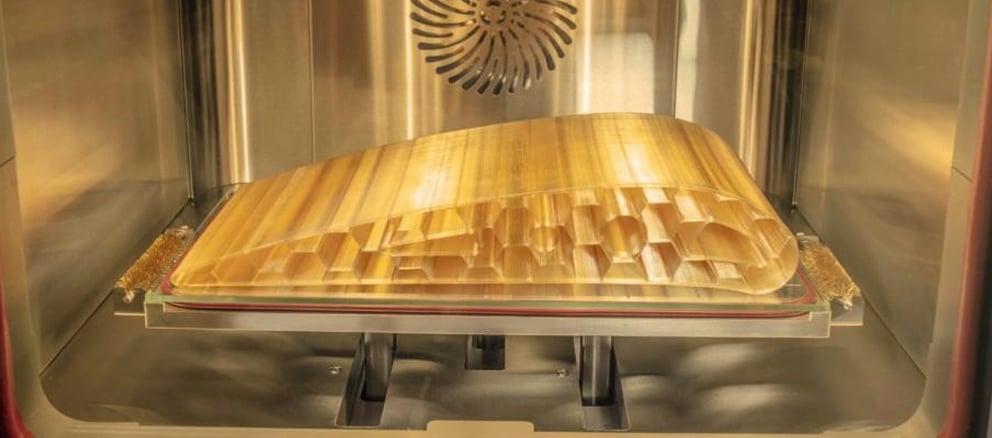
All Brands of High-Performance Polymers Are Not the Same
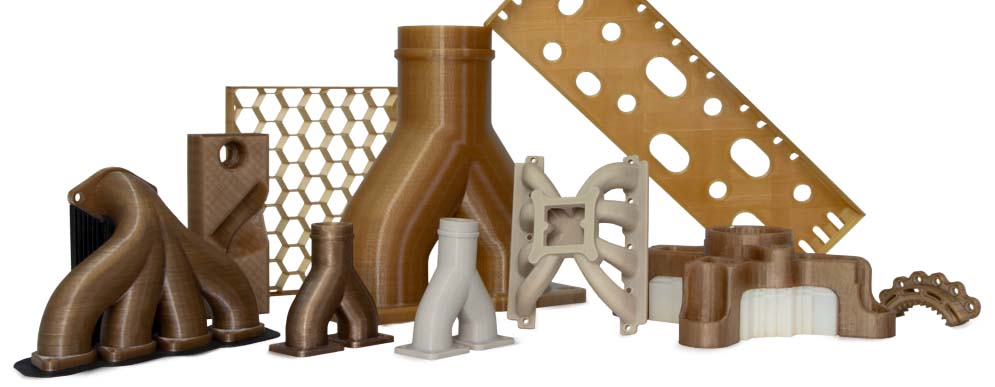
There are specialty chemical companies that make the polymers, then there are filament makers that use those polymers in filament. Sometimes you can buy high-performance materials directly from a specialty chemical company, such as Evonik or Solvay. Other times you’ll find these branded specialty polymers – VestaKeep, Ketaspire, Kynar, Kepstan – in products from other filament makers described as filament “based on” a branded polymer or “made with” a branded polymer. So what’s the difference?
Well, one important point to keep in mind when shopping for high-performance materials is whether or not the final part you’re making will be used in a regulated industry. Just because PPSU is biocompatible, doesn’t mean all PPSU filament is certified and approved as medically biocompatible. Individual material manufacturers have to submit their specific material to regulatory bodies for approvals, so be sure to check that your filament brand comes with these approvals.
For example, Solvay Radel PPSU filament is FDA approved for 24-hour skin contact for healthcare applications, but not all PPSU filaments are FDA approved.
Your safest course of action is to work with any of the specialty chemical companies below to understand more about their materials’ properties, uses, and approved distributors. With the branded products below, you’ll also receive detailed printing guidelines.
- Infinam PA / TPA / TPC / PEEK
- VestaKeep PEEK
- KetaSpire PEEK
- Radel PPSU
- Solef PVDF
- Solvay PAEK
- Adsint PA12
- Ultrafuse PA / TPC / TPE / PPSU
- Ultrasint PA (powder)
- XStrand (purchased from Owens Corning in 2020) PA / PC
- Rilsan PA 11
- Kepstan PEKK
- Kynar 460 PVDF
- Arnitel TPE
- Novamid PA
- EcoPaXX PA
- Ultem PEI
- Lexan PC
Mechanical Properties of Engineering & High-Performance Plastics
PC (Polycarbonate)

Polycarbonate (PC) is a strong material that stands out for three main features: optical clarity, resistance to heat, and incredible toughness. When 3D printed, it’s used across industries for automotive headlight prototypes, lamp shades, and translucent cases for electrical components.
- Highly transparent and glass-like
- High toughness down to -20 °C
- High mechanical retention up to 140 °C
- Intrinsically flame retardant
- Good electrical insulation properties not influenced by water or temperature
- Possesses good abrasion resistance
- Withstand repeated steam sterilizations
Price: Filament (1kg) from $60
PA (Polyamide, Nylon)
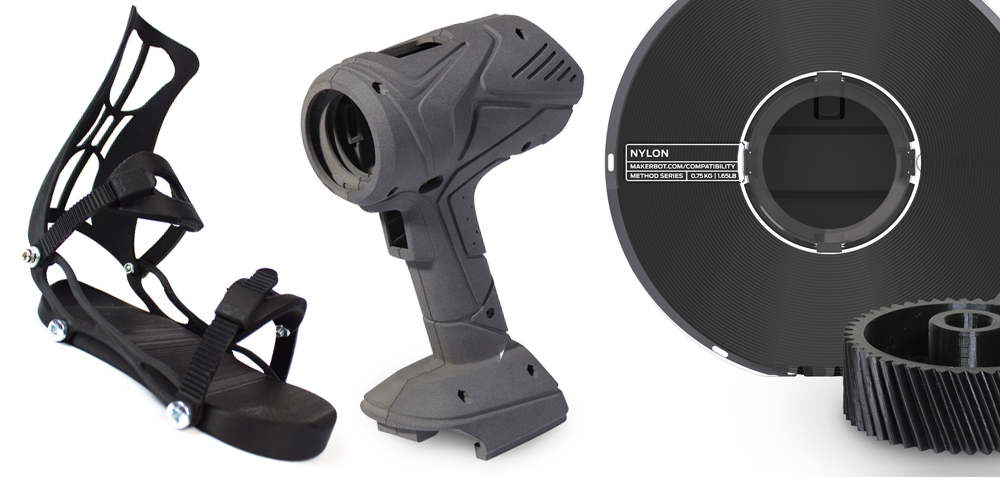
Polyamides (also called nylons) as a class of plastics – available in PA6, PA11, PA12, and others – are prized for their good balance of properties. Generally petroleum-based (except for PA11, which is a bioplastic), they exhibit both strength and wear resistance while being easy to work with. PA is commonly reinforced with carbon, glass, and kevlar fibers, or embedded with continuous carbon fiber, for added reinforcement. Widely used in high-end engineering applications, such as gears, jigs, fixtures, and tooling, PA is available as filament and powder.
- High strength and stiffness at high temperature
- Good impact strength, even at low temperature
- Very good flow for easy processing
- Good abrasion and wear resistance
- Highly resistant to fuel and oil
- Good electrical insulating properties
- High resistance to stress cracking, aging, and abrasions
- Highly water-absorbent
- Vulnerable to mineral acids and solvents
Price: Filament (1kg) from $70
Price: Powder (6kg) from $1,000
PETG / PET (polyethylene)
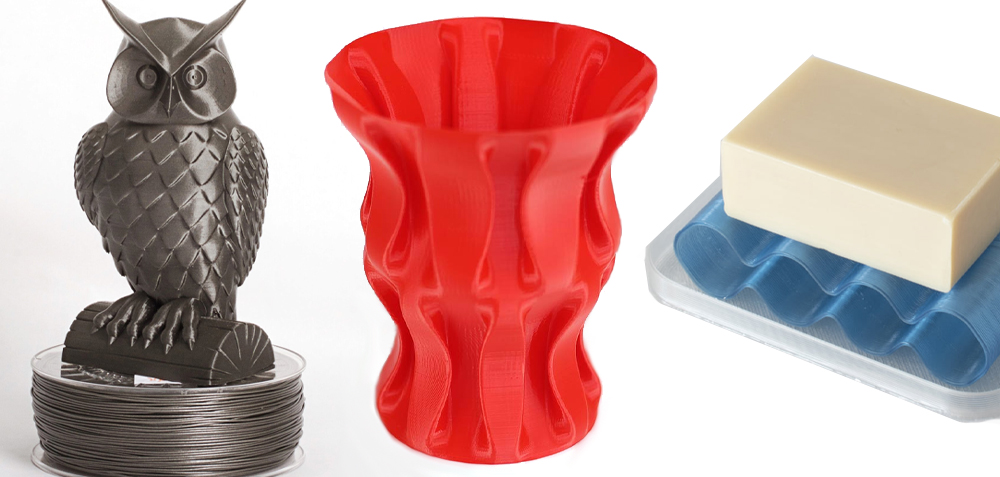
PET and PETG are in the same family of polyethylene terephthalates. PET is one of the most used plastic in the world, especially for food and beverage packaging, but not very popular for additive manufacturing due to its low heat resistance. PETG, on the other hand, is widely used for 3D printing for its significant chemical and heat resistance, good durability, and formability (compared to other plastics). Arguably not an engineering-grade polymer because of its low strength, PETG’s wear and impact resistance make it suitable for a range of industrial applications where an economical plastic is a priority. Applications for PETG include signage and graphic displays, and enclosures for electrical equipment.
PETG
- Significant chemical and heat resistance
- Good durability and formability
- Only moderate stiffness and strength
- Food-safe and non-toxic
- Translucent and has a glossy surface finish
Price: Filament (1kg) from $35
TPE / TPU / TPC (thermoplastic elastomers)

TPEs (thermoplastic elastomers) are a class of materials that are a blend of plastic and rubber, and include TPU (thermoplastic polyurethane), TPC (thermoplastic co-polyester), and others. These plastics are very soft and flexible. They are becoming more common in additive manufacturing to produce parts that can be bent or stretched without any deformation. TPUs are also generally more durable and can offer higher resistance to abrasion, oils, chemicals, and high and low temperatures than TPE filament. TPC boasts high-temperature resistance and excellent UV resistance. It is especially prized in biomedical applications and for wearable and medical devices. TPEs are available in filament, powder, and resin.
- High elasticity across the entire hardness range
- Excellent low-temperature and impact strength
- Resilience to oils, greases, and solvents
- Robust weather and high-energy radiation resistance
- Very good electrical insulation properties
- Can be produced in a variety of hardness grades
Price: Filament (1kg) from $40
Price: Powder (6kg) from $1,000
PEI (polyetherimide / Ultem)
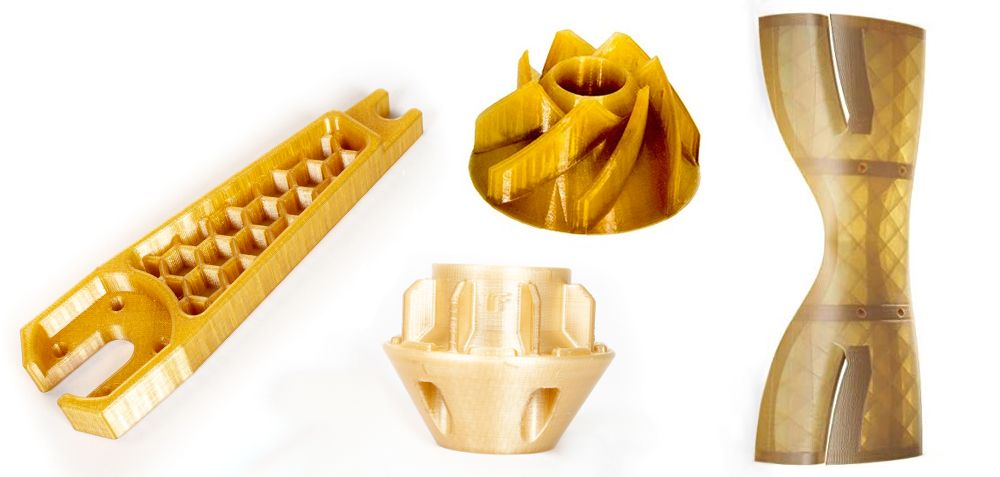
Polyetherimide (PEI) was first developed in 1982 by General Electric Company (now known as SABIC) under the trade name Ultem, as it is still commonly known. This high-performance plastic is characterized by outstanding thermal, mechanical and electrical properties. PEI offers manufacturers a high strength-to-weight ratio making it a cost-effective alternative to metal that’s strong enough to replace steel in some applications and light enough to be used in others to replace aluminum, particularly in aerospace. Other PEI applications include, gear components, valve housings, sensor and thermostat housings, demanding electrical applications, printed circuit boards, and plenum devices. There are many grades of Ultem with the most common being Ultem 1000. Ultem 1010 is a resin material, and Ultem 2300 is a 30% glass-reinforced.
- Very good retention of mechanical properties at extremely high temperatures
- Exceptional specific strength, rigidity, flexibility, and dimensional strength
- Good electrical properties
- Good UV-light resistance and weatherability
- Inherently flame resistant
- Resistant to alcohols, acids, and hydrocarbon solvent but dissolves in partially halogenated solvents
- PEI also displays good hydrolytic stability
- Performs especially well in hot air and water environments
- Most PEI grades are food-contact compliant
Price: Filament (1kg) from $350
PEEK (polyetheretherketone)
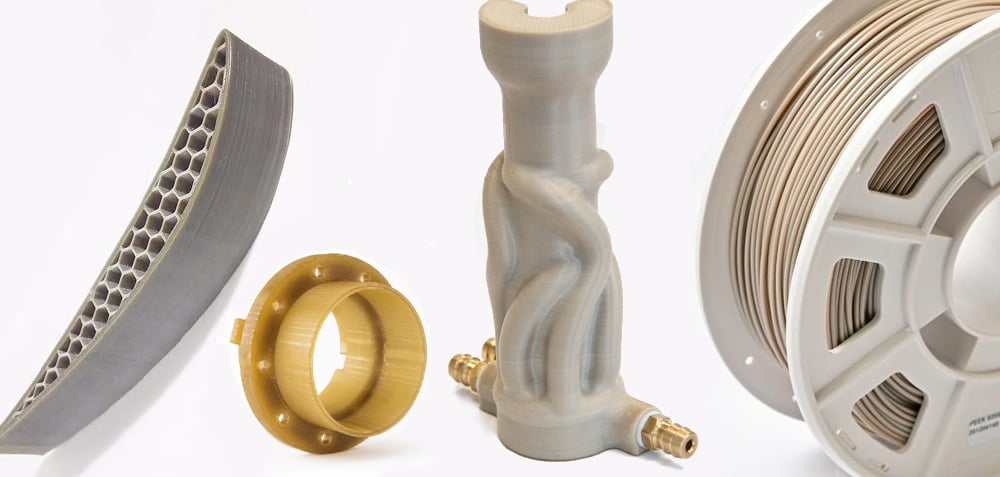
PEEK belongs to the Polyaryletherketone (PAEK) family of polymers and is enjoying growing popularity for applications in military, pharma, petrochemicals, and food packing. Its high cost, however, and tricky processing limit it to industrial use with specific printers. PEEK has less than half the weight of aluminum and one-sixth that of steel making it an excellent metal replacement parts in the oil and gas industry and in aerospace. PEEK’s properties can be further enhanced by combining it with composite materials, such as glass fiber, graphite, or carbon-reinforcements, which help fight shrinkage. PEEK is also used for medical implants (since it is fully biocompatibility and Xray transparent), but there’s a huge difference between industrial and implantable PEEK, with Evonik offering the only fully medically approved PEEK filament on the market to date (priced around $5,000/kg).
- Highly resistant to extreme temperatures up to 260°C
- Resistant to corrosive fluids, gases, and high pressures
- Highly resistant to high-pressure water or steam
- High self-lubrication ability and low friction
- Outstanding creep resistance
- Good dimensional stability
- Low flammability and little smoke emission when combusting
- Exceptional insulation properties
- Excellent sterilization resistance at high temperature
- Fully bio-compatible
Price: Filament (1kg) from $850
PEKK (polyetherketoneketone)
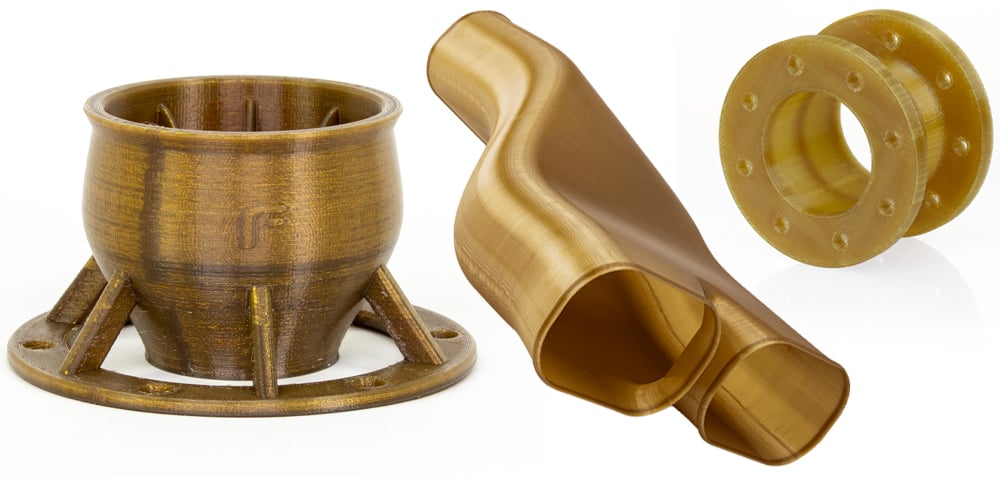
PEKK is another polymer in the Polyaryletherketone (PEAK) family and is one of the highest-performance polymers in world. PEKK has exceptionally good mechanical, thermal, and chemical resistance properties, but boasts far easier printability than PEEK. In fact, PEKK can be processed at lower 3D printing temperatures than PEEK-based filaments, doesn’t require a super-heated chamber (like PEEK), and has excellent layer bonding resulting in parts with exceptional dimensional accuracy and z-strength. This is another versatile high-performance 3D printing polymer that can replace metal and composite parts in various industries from aerospace and automotive to medtech and marine. The material is resistant to hydrocarbons and fluids.
Parts printed with PEKK may be heat treated (annealed) after printing to maximize the mechanical, thermal, and chemical resistance properties. Printed parts will be transparent golden in color and then turn an opaque tan color once annealed.
- High temperature resistance of 255+ ºC
- Very high stiffness, tensile & compressive strength, impact resistance
- Easy to print
- Flame retardant, low out-gasing
- Very limited warping
- Resistant to virtually all organic and inorganic chemicals
Price: Filament (1kg) from $750
PVDF (polyvinylidenefluoride)
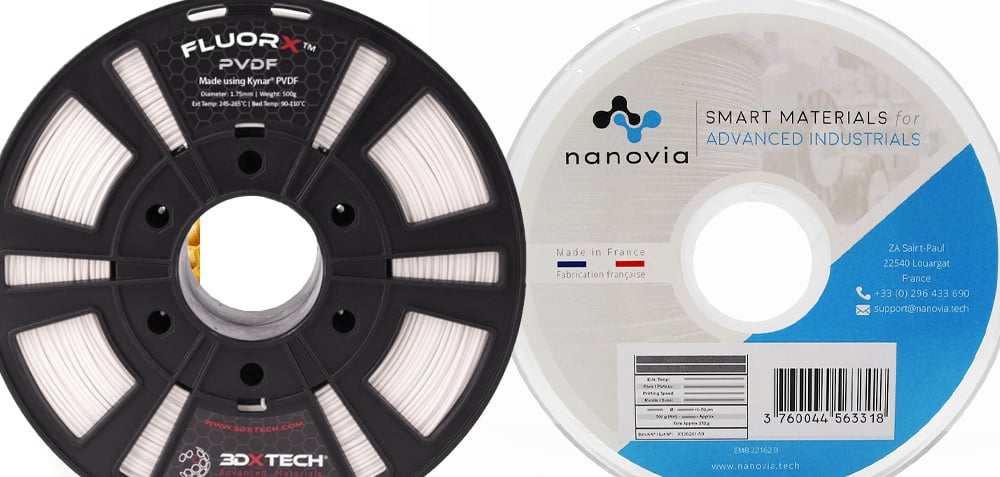
PVDF (Polyvinylidenefluoride) is another polymer gaining applications in additive manufacturing for its unique set of properties. PVDF is widely used in high-tech applications, such as chemical process equipment, semiconductors, lithium-ion batteries, and other electrical, electronic, and energy-related applications. In 3D printing PVDF exhibits very low warp and stands up to the most extreme conditions, even nuclear radiation. Panels made of PVDF are used on space probes and satellites.
- High thermal properties up to 150 °C
- Very low warping
- Excellent resistance to most chemicals, including fully halogenated hydrocarbons, alcohols, acids, and bases
- Non-hygroscopic, does not absorb moisture.
- Long-term hydrolytic stability
- Resistant to nuclear radiation
- Very good abrasion resistance
Price: Filament (1kg) from $250
PPSU (polyphenylsulfone)
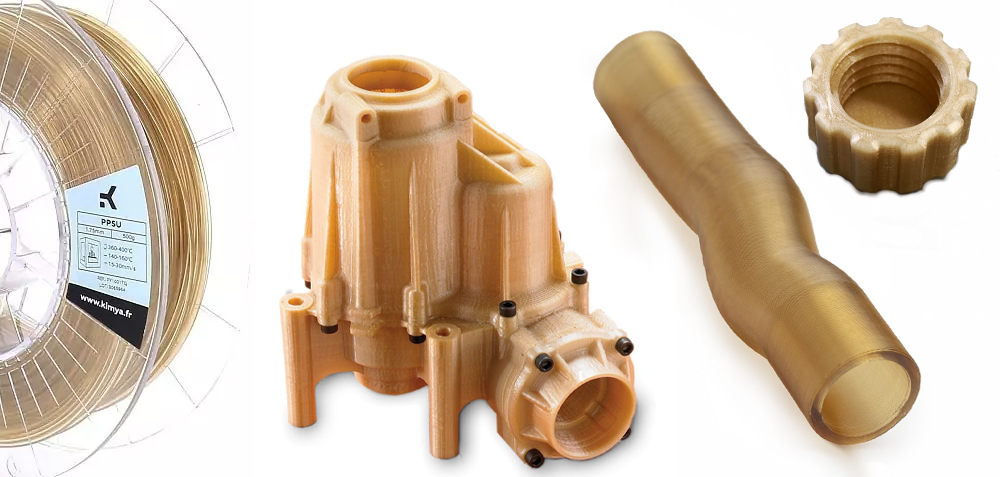
Sulfone polymers (PPSU, PESU, PSU) are another family of high-performance plastics that combine excellent thermal stability, high strength and toughness, excellent hydrolytic stability, transparency, and good resistance to environmental stress cracking. Setting these apart from the PEAK family is their high heat deflection temperatures (similar to PEI) and they are the only thermoplastics that remain transparent at super high temperatures (204 ºC), even after long-term exposure. PPSUs deliver long-lasting performance in hot water and steam, even under pressure, so they are often used to replace brass in pressurized hot water applications. They can be used as a lightweight alternative to metal in surgical sterilization cases and trays, implant trials, surgical instrument handles, and a host of other medical and dental devices. PPSU is also widely used in food service applications and aircraft cabin interiors.
- Outstanding long-term resistance to creep at temperatures up to 150 ºC.
- Easy to process
- Excellent wear resistance under continuous load at high temperatures
- Resistant to acids, alkalis, oils, greases, and aliphatic hydrocarbons and alcohols.
- Good optical clarity
- Very good hydrolytic and sterilization resistance
- Biocompatibility
- Excellent insulation properties
- Outstanding rigidity even at high temperatures
- Low resistance to UV light
Price: Filament (1kg) from $500
Special thanks to Omnexus by SpecialChem for contributions to our polymer mechanical properties information.
License: The text of "High-Performance 3D Printing Materials Guide" by All3DP Pro is licensed under a Creative Commons Attribution 4.0 International License.







